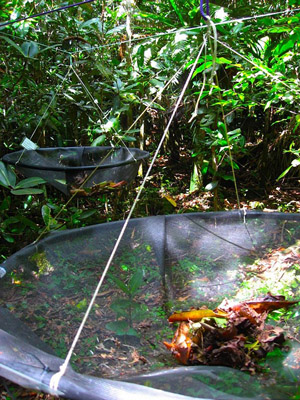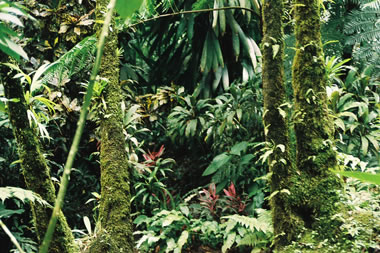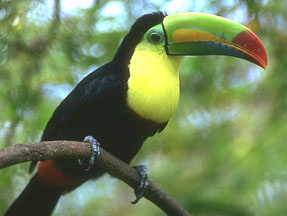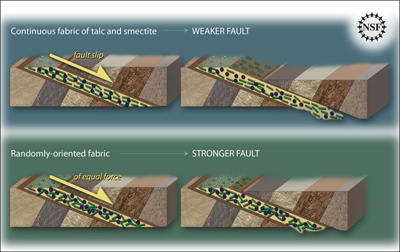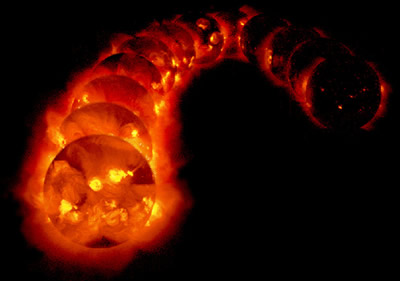Click on image for full size
Courtesy of Nash Turley, University of Washington
Can Forests Survive Without Birds?
News story originally written on January 30, 2009
Take one species out of an ecosystem and you could see lots of changes in the other living things. This is what is happening in the forests on the western Pacific island of Guam where bird populations have been decimated.
There used to be birds on Guam until the brown tree snake was accidentally brought to the island in the 1940s. The snakes multiplied as they ate Guamís birds. Today 10 of the 12 forest bird species are gone and there are about 13,000 snakes per square mile in Guamís forests.
Haldre Rogers, graduate student from the University of Washington, wants to know how the loss of birds is affecting Guamís forests. She and a team of researchers have been examining whether the loss of birds is having an effect on the forest trees.
They are studying whether there are changes in how the seeds from these trees are spread through the forest. Birds move seeds around a forest. They eat the fruit from a tree swallowing the seeds, and then fly to another tree in the forest where they defecate the seeds. Once the seeds are out of the bird, they can grow into a new tree.
To study whether seeds in Guamís forests were able to travel without the birds, the researchers set traps to catch falling seeds. They positioned seed traps various distances from fruiting False Elder trees to see how far seeds get from the trees. They also set up seed traps in the forests of Saipan, a nearby island where birds are still common. Counting the number of seeds that fell into each trap, they compared how far seeds travel in bird-less Guam and bird-rich Saipan.
So far they have found that all of the seeds from the fruiting trees on Guam remained near their parent trees while many more of the seeds from the fruiting trees on Saipan were found away from their parent trees. The lack of birds appears to be having an effect.
On the bird-less island of Guam, seeds donít get moved around. The fruits donít fall far from their trees. And seeds that are under the tree where they formed are less likely to grow into a new fruit tree than seeds that are moved away from their parent trees.


